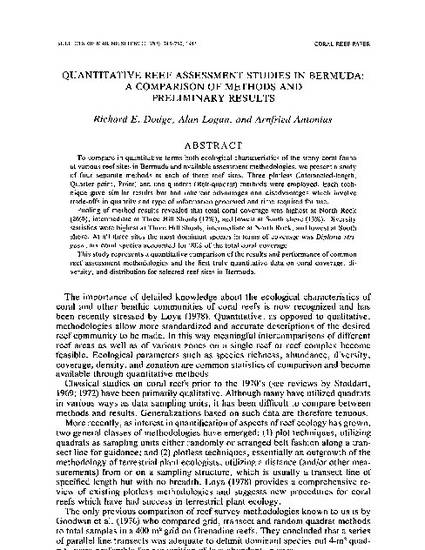
- Coral reefs,
- Bermuda,
- Environmental monitoring
To compare in quantitative terms both ecological characteristics of the stony coral fauna at various reef sites in Bermuda and available assessment methodologies, we present a study of four separate methods at each of three reef sites. Three plotless (Intersected-length, Quarter point, Point) and one quadrat (Belt-quadrat) methods were employed. Each technique gave similar results but had inherent advantages and disadvantages which involve trade-offs in quantity and type of information generated and time required for use.
Pooling of method results revealed that total coral coverage was highest at North Rock (26%), intermediate at Three Hill Shoals (17%), and lowest at South shore (13%). Diversity statistics were highest at Three Hill Shoals, intermediate at North Rock, and lowest at South shore. At all three sites the most dominant species in terms of coverage was Diplaria strigosa; six coral species accounted for 90% of the total coral coverage.
This study represents a quantitative comparison of the results and performance of common reef assessment methodologies and the first truly quantitative data on coral coverage, diversity, and distribution for selected reef sites in Bermuda.
